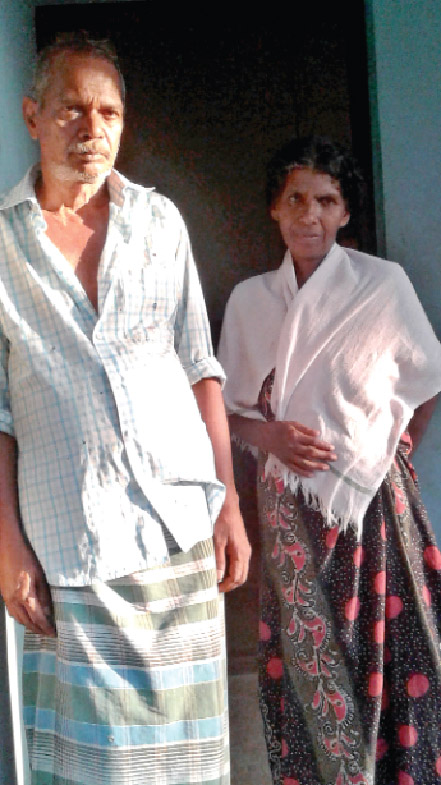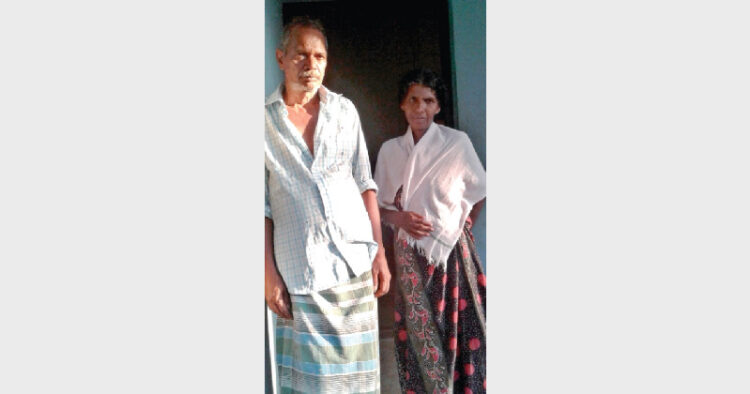
-Advaita Kala-
It was in February of this year that the trickle of images of a man’s body appeared on my twitter timeline. Initially, the human instinct for the macabre, made me pause at these images, click on them. The man’s face disfigured, his jaw twisted away, his features re arranged, his eyes pressed shut, made me recoil. I didn”t know his name or who he had been, till this face seized his entire identity, reduced his existence to his end. Another dead body. By now, we have all become immune, a little hardened to the horrors that happen to others. I always find the debates on exhibitionism in public forums facetious when compared to the lack of debate on the visuals and words of violence that consume our language, our vision, and our thoughts. That dehumanise far more than any titillation ever could. This body would have passed me as well, floated by on the placid stream of daily occurrence. But the text below the image, made me pause. It gave the boy’s name “Sujith” and it said that he had been hacked to death in front of his parents. This made me linger, there was a photograph which emerged of his mother, her arm in a sling, it had been broken when she had rushed to protect her son. When I met her a few months later, the enormity of her bravery awed me. She is a small woman of slight stature. I could imagine her rushing out, barefoot over the uneven gravelly space outside her home, unmindful of the bruising to the soles of her feet. She must have tried to tear through the crowd of twenty odd men who circled her son. Tried to pull them apart, maybe her diminutive frame helped her squeeze through their tight circle. But her helplessness did not permeate their cruelty. Shoving her aside, beating her, breaking her arm, they did what they had intended to, killed her son. The horror of her experience was not something I could fully grasp that day, but her devastation was evident to all who saw the image of her seeing her son’s body for the first time.
Thus began my journey into Kannur, a part of beautiful Kerala, a state that I had only ever been introduced to through Gods Own Country advertising campaigns and sterile visits spent in tourist locales. People advised me not to go, even seasoned journalists, a friend asked me “what I was thinking ”. Indeed was I thinking at all? I set out on my journey with trepidation. I had lived in Burma as it transitioned into a democracy, the life there was still laced with fear, people never spoke their minds. At a press conference, no journalist asked a single question. Burmese friends, who lived a kilometre away from one of the landmark clash sites between the monks and the junta, couldn”t recall what they were doing at the time but recalled that they had seen and heard nothing. In Burma, I sent articles back to a newspaper I was writing for in India, always careful to avoid politics, lest my visa was cancelled and I was deported. I wrote on architecture and heritage, as I made notes in my head. But I was safe, never physically vulnerable. At least in my mind.But in Kannur, I was unsure if my mind would fortify me. I needn”t have worried, whilst the threat didn”t ever go away, the fear did. The first few days I didn”t tweet my whereabouts, then the advise of a renowned senior journalist came back to me, “Tweet everything,” she had said, “location, people you meet, everything. Just in case”. So on the third day, I began to tweet. But whilst it was about securing myself, it was also because the people I met and spoke to overwhelmed me with their stories and courage.
The first night, I returned to my little hotel room and broke down, there was no television, no distraction, just thoughts and the voices, the tears, the maimed limbs and broken dreams. I messaged a friend and he said “soak it up” – but how, I had never felt so porous? I was not a journalist, only a story teller. And I was telling only one part of the story. But it was important to do that if people were going to listen, if they were to be enticed into a debate – an “us vs them” and then a conversation, followed by a resolution? It was important. It might save lives. And purpose evolved.
On the third day, we began to shoot a documentary. My meagre savings had permitted me two assistants, one, Zuber, was known to me through his father, whose bookstore I have visited for nearly fifteen years. I felt responsible for his safety. He had been on these trips with me before, but this time there was the risk of violence. Also I was concerned that as a Muslim he might feel uncomfortable surrounded by Sangh workers. He assured me that it wasn”t the case, though he had his reservations about the Sangh, this was work. I accepted his assurance. The first day, Zuber and Manjeet (second assistant) met Sadanandan Master, the protagonist of our film, they rushed out with their cameras to record him alighting from his car, his companions assisting his walk up the stairs. Introductions were made and their names enquired, we were in the Sangh Karyalaya, when Zuber gave his full name – an instinct of protectiveness, made me scan the faces of the gathered audience, to find only pleasant smiles of greeting. And I felt embarrassed by my own reaction, especially since I know the Sangh better than that.
We spent the afternoon at the Karyalaya, breaking for a home cooked lunch served on banana leaves. I left for a meeting in Tellicheri, leaving Zuber and Manjeet with Master ji, to record his public appearances for the day. Something happened during those three hours they spent together, when the two of them returned along with Rithin, the swayamsevak who was our guide/driver there was an inexplicable camaraderie. Zuber leaned over and said to me in surprise,”Mam, do you know most of Rithin’s friends are Muslims?” Rithin, spoke mostly in Malayalam but knew a few key words in English, he nodded and pointed out a house, “Friend, Ashraf”. We looked over and I detected the influence of Middle Eastern architecture. “Gulf?” I asked. He nodded. Many young men in Kannur have left for the Middle East, sending back money to build homes. The opportunities are limited in this left bastion and the environment is vitiated by political violence. From then on, our days together, despite the language barriers or because of it, were spent amidst peals of laughter driving through “jhagda places” as Rithin called them, our fingers crossed but our curiosity piqued. He took us to a sangh gram, saying the word with pride, these are but little islands surrounded by the Red Sea, or the sea of red. But they exist, as a symbol of resistance rather than aggression. The Sangh’s presence in Kannur, has been one of resistance and the only thing sangh workers will tell you is that they want to start shakhas, that is their only demand. It’s the root cause of the violence. Shakhas, where all are welcome, across political and religious lines. Like the shakha, this gram is open to all, we passed a Congress campaign jeep, blasting messages from its speakers. Such a liberty would not be permitted in a party village. We paused to wave to their cheerful party workers, who waved back. It”s the only moment of political camaraderie, I witnessed. The UDF, say pandits, will lose but with a popular Chief Minister, the spirit of their cadre seems high. I return from Kannur with memories of the people I have met and laughed with and cried with. I expected to feel fear there. But instead, I feel it here. I feel it not for myself but for them and others I haven”t met and of the violence that shadows their lives. Zuber turns to me as our train pulls into Delhi, “Mam, we are back in the world of drawing rooms, they will never know people like Master ji, Daadhi wale ji (affectionate reference for Chandran Snr, Sanghchalak and swayamsevak for 72 years) and Rithin, they will only hate the Sangh”. He might be right for now, but not for long. n














Comments